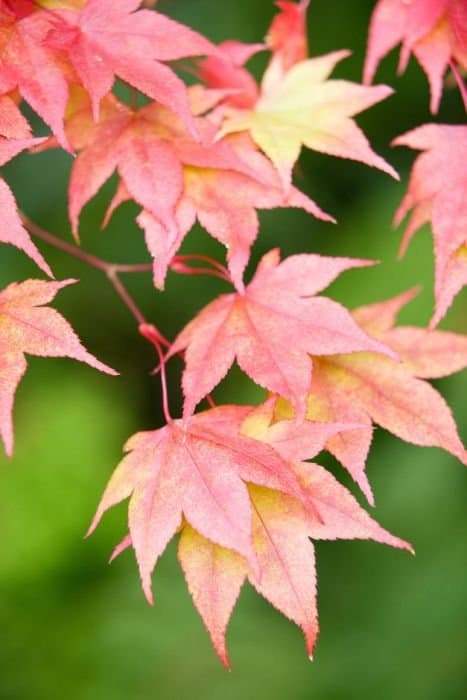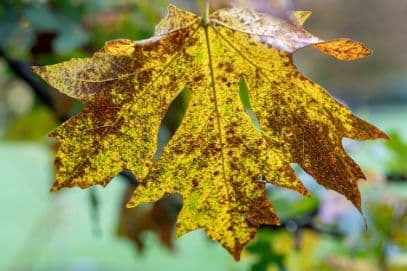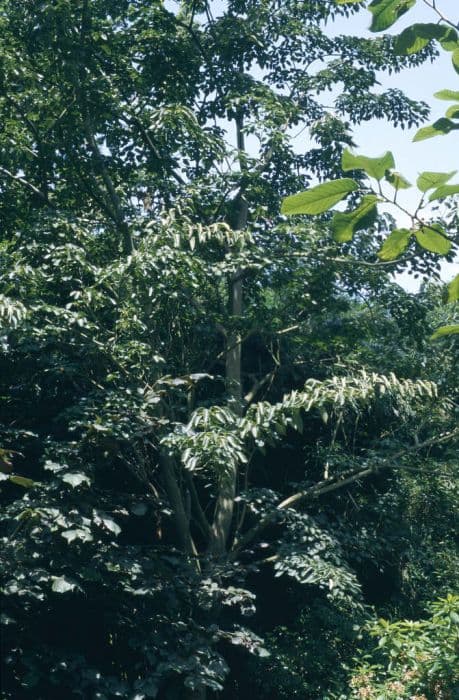Japanese Maple Acer palmatum 'Redwine' (PBR) (P)

ABOUT
Acer palmatum 'Redwine', commonly known as the Japanese maple 'Redwine', is noted for its distinctive and ornamental foliage. During the growing season, the leaves of this cultivar exhibit a rich palette of colors. The leaves are palmately shaped, reminiscent of a hand with outstretched fingers, giving the Japanese maple its characteristic look. Each leaf typically has multiple points, often five to seven, arranged in a radial pattern. The 'Redwine' variety is celebrated for its deep crimson hues that blanket the leaves. The leaves emerge with a vibrant red or purple tone in spring. As they mature, they develop a complex layering of shades which can include an interplay of dark reds and purples, creating a tapestry of color that can appear almost wine-like, hence the name 'Redwine'. This dynamic coloration continues through the summer. As the seasons transition to fall, the leaves take on a new dimension of color. They can transform to exhibit tones of fiery reds and bright scarlet, providing a dramatic end-of-year display. The intensity and hue of the fall colors can be a particularly striking feature of the plant, making it a standout in any garden during that time of year. Aside from its colorful leaves, the Japanese maple 'Redwine' has a graceful structural form. The branches often grow in a picturesque, somewhat horizontal manner, contributing to the overall aesthetic quality of the tree. The branching pattern, combined with the vivid foliage, can make this plant a focal point in a landscape design. The bark of the Japanese maple 'Redwine' is typically smooth and may take on a subtle complementary color to the foliage, enhancing the visual interest of the tree even in the absence of leaves during the dormant season. Overall, the appearance of the Japanese maple 'Redwine' is characterized by its striking leaf coloration, graceful foliage shape, and elegant structural form, making it a treasured addition to gardens where its visually appealing attributes can be fully appreciated.
About this plant
 Names
NamesFamily
Sapindaceae
Synonyms
Japanese Maple, Red Japanese Maple, Redwine Japanese Maple
Common names
Acer palmatum 'Redwine' (PBR) (P).
 Toxicity
ToxicityTo humans
The Japanese Maple (Acer palmatum 'Redwine') is not known to be toxic to humans. In general, ingestion of this plant is unlikely to cause poisoning or serious health issues. However, as with any non-food plant, individual reactions can vary, and it is not advisable to consume it intentionally.
To pets
The Japanese Maple (Acer palmatum 'Redwine') is generally considered non-toxic to pets such as dogs and cats. There should be no significant risk of poisoning or adverse health effects if pets ingest parts of this plant. However, pet owners should always monitor their pets and prevent them from eating plants as a precaution.
 Characteristics
CharacteristicsLife cycle
Perennials
Foliage type
Deciduous
Color of leaves
Red
Height
6-8 feet (1.8-2.4 meters)
Spread
6-8 feet (1.8-2.4 meters)
Plant type
Tree
Hardiness zones
5-8
Native area
Japan
Benefits
 General Benefits
General Benefits- Visual Appeal: The Acer palmatum 'Redwine', commonly known as Japanese Maple, offers striking red foliage that changes throughout the seasons, adding color and visual interest to landscapes.
- Compact Size: This particular variety tends to have a compact growth habit, making it suitable for smaller gardens or spaces.
- Shade Tolerance: Japanese Maples can tolerate a range of light conditions, including partial shade, allowing them to be planted in various locations within a garden.
- Seasonal Interest: With leaves that change color in the fall, Acer palmatum 'Redwine' provides extended seasonal interest beyond the spring and summer months.
- Low Maintenance: Once established, they require minimal maintenance, needing only occasional pruning to maintain shape and health.
- Ornamental Use: The distinctive palmate leaves and layered branching structure make it an ideal specimen for ornamental use in landscape designs.
- Canopy Structure: The canopy of the Japanese Maple provides a habitat for birds and other wildlife, offering shelter and nesting sites.
- Cultural Significance: Japanese Maples are often associated with peace and tranquility, and are traditionally used in Japanese garden design.
 Medical Properties
Medical PropertiesThis plant is not used for medical purposes.
 Air-purifying Qualities
Air-purifying QualitiesThis plant is not specifically known for air purifying qualities.
 Other Uses
Other Uses- Acer palmatum 'Redwine' can be used as a natural dye source. The vibrant red leaves may be boiled to extract color for fabric or craft projects.
- The fine-textured leaves of Japanese Maple are sometimes incorporated into ornamental art, such as leaf casting, where they create delicate, intricate patterns.
- Wood from Japanese Maple, being hard and having a beautiful grain, is used in woodworking for making small objects like tool handles or decorative boxes.
- During fall, when leaves drop, they can be collected and used as a mulch in garden beds to add nutrients to the soil as they decompose.
- In bonsai, Japanese Maple trees are highly prized and cultivated for their aesthetic qualities, requiring careful shaping and pruning.
- The sap from Acer palmatum can be used in small quantities as a natural sweetener, similar to how maple syrup is produced, though it is not common.
- Dried leaves of Japanese Maple can be added to potpourris for a pop of color and to contribute to a blend of natural fragrances.
- Japanese Maple branches can be used in floral arrangements, particularly in ikebana, the Japanese art of flower arrangement, for their elegant form and striking color.
- As a photography subject, the dramatic foliage and structure of Japanese Maple make it a favorite among nature photographers, particularly in autumn.
- The leaf shape and distinctive colors of Japanese Maple are sometimes used in textile and wallpaper designs, providing inspiration for patterns and motifs.
Interesting Facts
 Feng Shui
Feng ShuiThe Japanese Maple, associated with balance and calm, can be used in Feng Shui to create a sense of peace and enhance the beauty of a garden. Its red leaves are believed to bring positive energy, and placing it in the East is thought to improve health and family harmony or in the Southeast to attract wealth and abundance.
 Zodiac Sign Compitability
Zodiac Sign CompitabilityThe Japanese Maple is not used in astrology practice.
 Plant Symbolism
Plant Symbolism- Beauty: The Red Japanese Maple is renowned for its stunning foliage and elegant form, symbolizing natural beauty and grace.
- Peace: With its serene and calming presence, this tree is often associated with tranquility and inner peace.
- Longevity: The Red Japanese Maple has a long lifespan, representing endurance and the passage of time.
- Balance: The intricate and balanced shape of its leaves and branches signifies harmony and equilibrium in life.
- Change: As the leaves of the Red Japanese Maple shift colors through the seasons, the tree symbolizes change and the cyclical nature of life.
 Water
WaterThe Japanese Maple 'Redwine' prefers consistent moisture and should be watered deeply when the top inch of soil feels dry, typically once or twice a week depending on weather conditions. During dry spells or hot summers, water requirements may increase, and you might need to water every 2-3 days. Provide about 1-1.5 gallons of water for each watering session to ensure the root zone is thoroughly moistened. In the dormant season, reduce watering but do not let the roots dry out completely.
 Light
LightJapanese Maple 'Redwine' thrives in partial shade to full sun, but in areas with particularly hot summers, it benefits from some afternoon shade to prevent leaf scorch. Ideally, place this cultivar in a location where it will receive morning sunlight and afternoon dappled shade for the best foliage color and health.
 Temperature
TemperatureJapanese Maple 'Redwine' can tolerate a wide range of temperatures but performs best between 60°F and 80°F. It can withstand a minimum temperature down to around -10°F. The ideal growth conditions include avoiding extreme heat, so ensure protection from intense afternoon sun in hotter regions.
 Pruning
PruningPrune the Japanese Maple 'Redwine' to maintain its shape and remove any dead or damaged branches; this is best done during the dormant season in late winter or early spring. Light pruning can be done in summer if necessary to improve air circulation or reduce excessive growth. Pruning is also vital for removing any crossed branches that might cause wounds and later infections.
 Cleaning
CleaningAs needed
 Soil
SoilJapanese Maple 'Redwine' thrives in well-draining soil enriched with organic matter. The ideal soil mix consists of equal parts loam, sand, and peat or compost to retain moisture yet allow excess water to drain. A slightly acidic to neutral soil pH of 5.5 to 7 is preferred for optimal growth and health.
 Repotting
RepottingRepot Japanese Maple 'Redwine' every two to three years to refresh the soil and facilitate healthy growth. Younger trees may require more frequent repotting, while mature specimens can be repotted less often as their growth rate slows.
 Humidity & Misting
Humidity & MistingJapanese Maple 'Redwine' prefers moderate humidity levels, but can adapt to the ambient outdoor humidity in most temperate regions. It doesn't require high humidity environments and can tolerate some dry air.
 Suitable locations
Suitable locationsIndoor
Place in bright, indirect light and protect from drafts.
Outdoor
Plant in dappled shade, shelter from harsh winds.
Hardiness zone
5-8 USDA
 Life cycle
Life cycleThe Japanese Maple 'Redwine' begins its life with seed germination, typically requiring stratification to break dormancy and encourage sprouting. After germination, it enters a juvenile phase where it focuses on root and foliage development. As a young tree, it slowly establishes a strong root system and begins to produce its characteristic red-purple leaves that change color through the seasons. Reaching maturity after several years, it can start to reproduce, producing seeds after flowering in the spring, which are then dispersed by wind or wildlife. As a mature specimen, the tree continues to go through annual cycles of leaf production, flowering, and seed set. It can live for many decades if provided with suitable growing conditions and care, with some trees reaching the age of over a century.
 Propogation
PropogationPropogation time
Early Spring
The most popular method of propagation for the Japanese maple 'Redwine' is by grafting, which is typically performed during the dormant season, usually winter or very early spring. In grafting, a piece of a stem with leaf buds, known as a scion, is inserted into the stock of another tree. The scion is taken from a healthy 'Redwine' tree and chosen for its desirable characteristics. It is important to ensure that the vascular cambium of the scion aligns with that of the rootstock, enabling the successful transport of nutrients and water once the graft heals. After the scion is carefully fixed in place, it is sealed with grafting tape or wax to prevent drying and infection. The grafted plant is then kept under appropriate conditions until the graft union is strong and the new plant is able to be planted out. This method relies on precise technique and a compatible rootstock to ensure healthy growth and the true-to-type qualities of the 'Redwine' variety.








